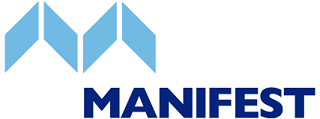The Pandemic showed that when staff had to work from home, most businesses did not collapse, as staff spent all day watching Netflix!! In fact most people who did a good job before carried on after. Those that took advantage of the situation would probably have done so in the office as well!
Even now when we trust our staff to work from home, we don’t always trust them to use their judgement to collect data. So is it not time to start trusting staff to use systems properly , and not “lock them down” in endless mandatory information fields and unnecessary workflows?
These are just some of the real examples of organisations pointlessly gathering information or forcing unnecessary clicks that I still encounter:
1. Putting a tick in a box to say you have asked to update tenant details!
If a customer service team member has a queue of people waiting to speak to them and are under pressure to close calls quickly, are they going to ask if the tenant’s details are correct or will they tick this box anyway just to close the call! No prizes for guessing the latter!
2. Forcing staff to add notes in a field, even if there’s nothing they need to record.
How many notes fields look like this?
“Gghhffs ggddhnb rwsxyu jjkljbf vgfdddg
Hhgfggvgh hhff hhffhjfryihvfv”
Setting a minimum character length on a notes field and forcing staff to put something in the box often means lots of notes that look a bit like this and adds nothing to service delivery.
3. Pop up Alert Fatigue
Although I can see the importance of alerts for some key data, especially where staff and customer safety is involved, too many pops ultimately get ignored. I have watched staff click through warnings simply to get to the next stage of a process, often without even reading the information. Or long lists of information, mostly irrelevant to the individual, requiring the user to scroll through to the bottom to find the information of relevance!
If staff are not completing workflows and data fields correctly, perhaps the business should ask why. Some possibilities:
- Have they been trained?
- Do they know the importance to other staff, the business or the customer?
- Do they have time, as above, competing targets – is it speed of call closure or accuracies of data? – you can’t always have both!
- Does the workflow make sense? I have to admit to using the term service request! Perhaps “customer/tenant enquiry or request!)
In truth, sometimes a member of the team may not be delivering, but is the answer to create a application that forces all staff to fill in pointless fields, simply because ONE staff member is not doing their job, or is it better to address the individual issues and have a system that is efficient and easy to use? And more to the point, Housing Management Systems can’t work out if fields have been completed because they are relevant, or whether someone is clicking through to move to the next stage of a process. expecting the application to sort this out is a bit of a cop out!
Avoiding these pitfalls
Systems evolve over time of course, but whenever you’re designing a new process or workflow that you want to design into the workflow, its always helpful to consider the following:
- Design the process flows with the staff who will be operating them: Your team will often know the best way to do things
- Think about the information that you’re gathering: If you’ll never use this information for anything useful, why are you gathering it?
- Plan and deliver training for go live, post go live and ensure good succession training is in place: Bad habits and shortcuts can be “baked in” by a lack of formal training for new team members.
- Don’t become too focused on one solution, it is how the software is used to achieve the end result you need that is important!
About Gareth Rexworthy
Gareth is the Managing and Commercial Director at Manifest and has worked in the Housing technology sector for 18 years , working in all sorts of roles including system implementation and development, system administration, business analysis, IT Training and project management.

